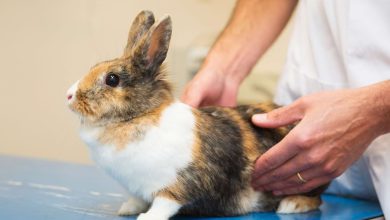Best Sand for Hamsters: Top Picks for a Safe Sand Bath

Hamsters are naturally found in deserts and arid areas with a lack of water. This is why they’ve adapted a unique way of keeping their fur clean and shiny. They maintain their hygiene by rolling around in the sand, minimizing the need to use their saliva and preserving precious water.
As hamster owners, it’s our responsibility to provide the right kind of sand for our pets. Not all sand is created equal, and some types can even be harmful to our pets. By choosing the appropriate sand, you’ll promote good hygiene, prevent health issues, and contribute to a happier and healthier environment for your hamster.
In this article, we’ll explore the best sand options for hamsters, discussing their advantages and potential drawbacks. We’ll also go through unsafe options, so you know what to avoid!
Why Hamsters Need a Sand Bath in Their Cage
The main reason why a sand bath is a must-have is that hamsters clean themselves using sand. Your hamster will roll around and rub themselves in the sand to coat their fur and skin. This removes excess oils, dirt, and debris from their fur.
Your pet should never be washed with water unless your vet instructs otherwise. Water strips the natural oils off hamsters’ coats, which can lead to skin irritations and infections. Instead, you should provide your hamster with a sand bath.
Not only does a sand bath help keep your hamster’s fur clean and shiny, but it also reduces the risk of parasites making their skin and fur their home.
Lastly, sand baths provide a form of enrichment for your hamster. The opportunity for these little guys to roll around and dig in the sand can be a great source of entertainment, mental stimulation and enjoyment. It’s a small yet essential addition that goes a long way in keeping your hamster happy and healthy!
Types of Sand to Avoid
First, let’s go over the types of sand to avoid so you don’t buy something unsafe for your pet:
- Scented Sand: Fragrances may be pleasant for us humans, but they can cause irritation and discomfort for our pets. Hamsters have sensitive respiratory systems, and scented sand can potentially trigger respiratory issues.
- Products Labeled as ‘Dust’ or ‘Powder’: These products are usually too fine and can create a dusty environment that is harmful to your hamster’s lungs.
- Colored Sand: Colored sand may contain dyes or additives that can harm your hamster. The chemicals in the dye might irritate your pet’s skin, eyes, or respiratory system. Instead, opt for natural, untreated sand for a safer alternative.
- Sand with Added Minerals or Calcium: If ingested by your pet, these types of sand may turn into sludge in their stomachs and cause health complications. Hamsters tend to groom themselves after a sand bath, and consuming sand with added minerals could lead to health problems.
- Anything That Is Too Dusty: Any sand that appears too dusty or fine should be avoided for your hamster’s sand bath. A dusty environment can cause respiratory issues and discomfort for your pet. Always choose a sand product with larger particles and minimal dust to keep your pet safe.

Best Sand for Hamsters
It’s important to choose the right kind of sand for your pet to keep them clean, safe, and comfortable. Here are some of the best sand options for your hamster.
Reptile Sand – Natural Color with No Added Minerals or Calcium
Reptile sand is one of the most popular sand bath options, and for good reason. Although it’s designed for reptiles, it serves perfectly for your hamster as well. Opt for natural color sand with no added minerals or calcium to ensure it is safe for your pet.
The most commonly used brand of reptile sand is ReptiSand (you can find it on Amazon and Chewy).
Children’s Play Sand
Children’s play sand is widely available in stores or online and is much more affordable than products designed for small pets. Be careful to avoid any play sand containing added chemicals or fragrances, as these are unsafe.
Play sand can be used as is for your hamster if it’s heat-treated. If it hasn’t been heat-treated, you should bake it in the oven to kill potential bacteria or parasites. Bake at 350°F (180°C) for 20-30 minutes, then leave it to cool down before touching it as the sand gets extremely hot!
Some hamster owners also like to sift through the play sand if it seems too rough or has large pebbles, but it depends on what kind of sand you get.
One of the most popular options is Quikrete play sand. It usually costs around $5-7 for 50 lb bag in stores like Lowe’s, but the price can go up to $50 in some places so it’s worth shopping around the find the best deal.
Small Animal / Chinchilla Bathing Sand
Small animal or chinchilla bathing sand (not “dust” or “powder”) is another good option for your hamster. This type of sand is specifically designed for the needs of small animals and is gentle on their fur. Choose high-quality, dust-free sand to avoid respiratory issues.
Small animal or chinchilla bathing sand can be found in most pet stores and is a convenient, safe option for your hamster. A good and commonly used option is Niteangel Desert Sand.
Certain Aquarium Sand
Aquarium sand is another suitable option, but not all products are created equal. Make sure that the sand you choose is free of calcium, chemicals, and additives, as these can be dangerous to your hamster.
A safe option is CaribSea Super Naturals Aquarium Sand which can be purchased on Amazon, Chewy, and Petco. Double check what you’re buying as you don’t want to get CarbiSea Crystal River or Torpedo Beach.
How to Set Up a Sand Bath for Your Hamster

Setting up a sand bath for your hamster is a pretty straightforward process. Just follow these simple steps to create the perfect sand bath for your furry friend:
- Buy and prepare the sand. If you’re using children’s play sand that wasn’t heat treated, don’t forget to bake it in the oven to make it safe for your hamster. Baking it for 20-30 minutes at 350°F (180°C) will eliminate all the bacteria and parasites. Alternatively, you can opt for reptile sand or other safe options we listed above that don’t need prepping.
- Consider where you’ll put the sand. You can use any sizable, shallow container, such as a large ceramic dish or a dog food bowl. Roborovski hamsters require more sand than other species since they are exclusive desert dwellers. It’s recommended that ⅓ of their cage (which should be minimally 775 sq. inches in size) is filled with sand.
- Add the sand. Once you have your sand (and container) ready, add a generous 1-2 inch layer for your hamster to dig and roll in. Adding a piece of soiled bedding to the sand bath can help encourage your hamster to use it and get familiar with their new grooming station.
- Add a hideout (optional): Many hamsters like to have a private space in their sand bath. Adding a small house with no floor will allow your hamster to clean themselves while feeling safe and protected.
As your hamster uses the sand bath, make sure to keep it clean.
Many hamsters choose to use their sand bath as a toilet. If yours does, too, use a sifter to remove pee and poops every couple of days. Top up with new sand when necessary to keep the sand bath fresh and clean.
You can also add an additional sand bath to your hamster’s cage so they can use one as a toilet and the other for bathing.



